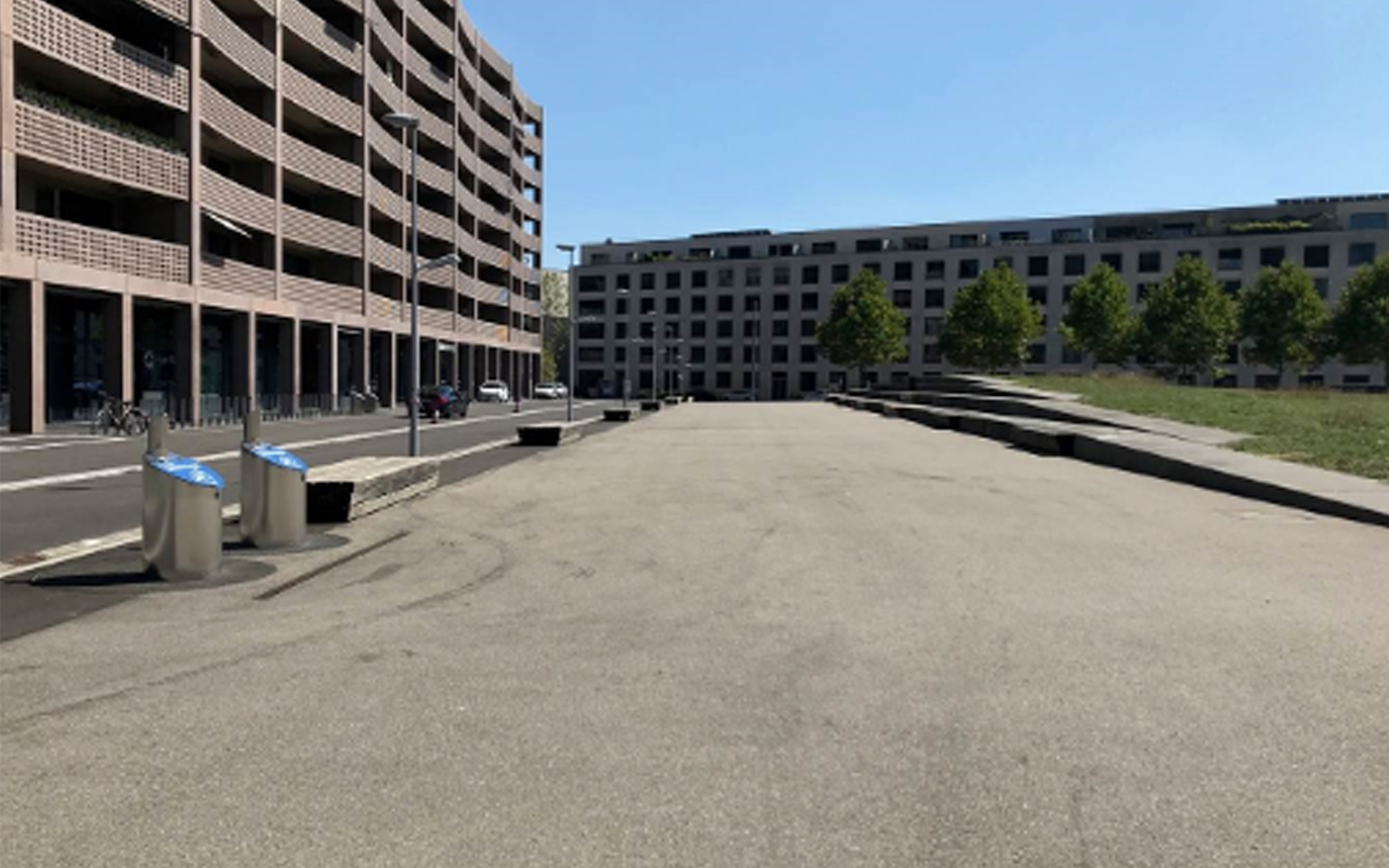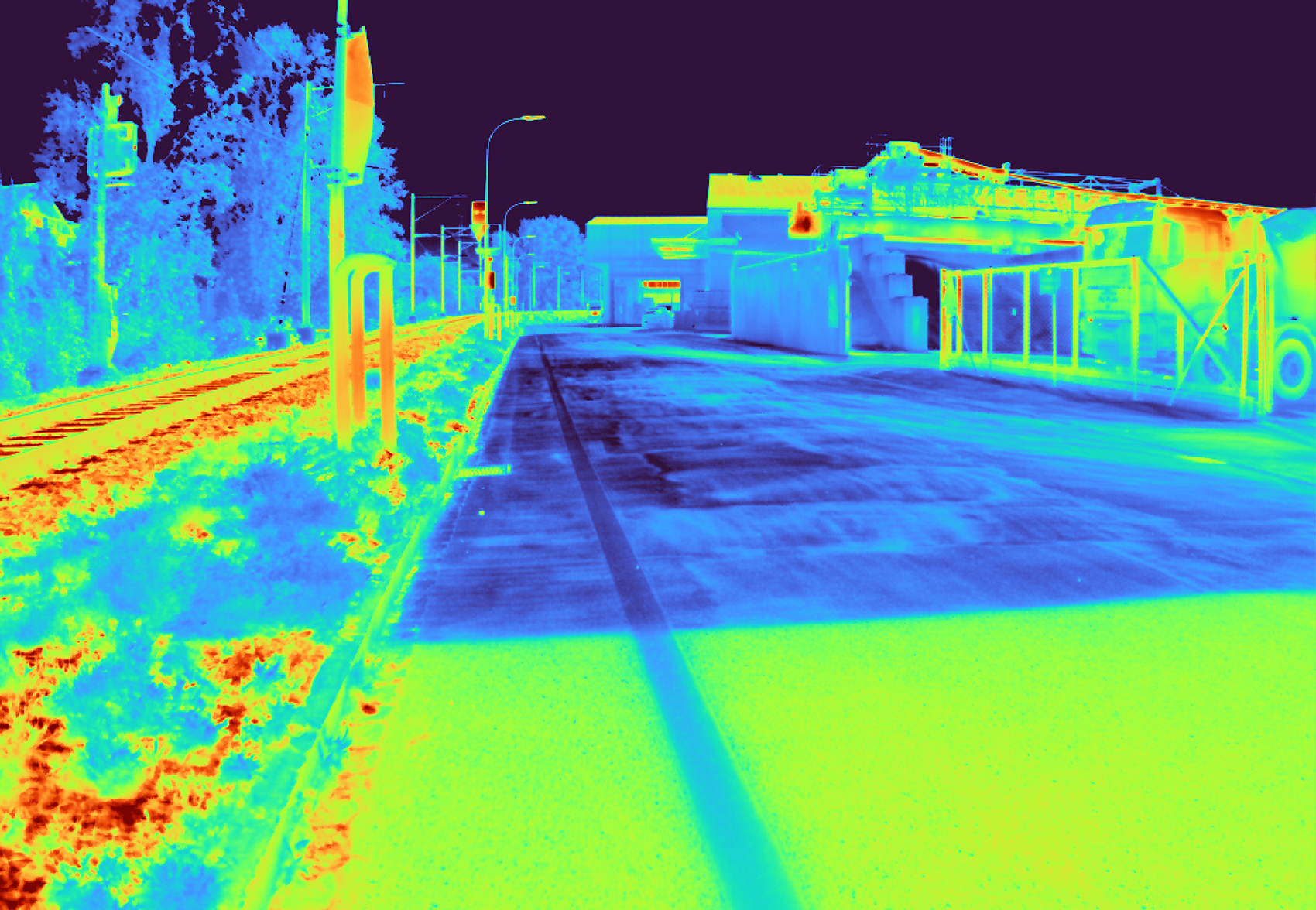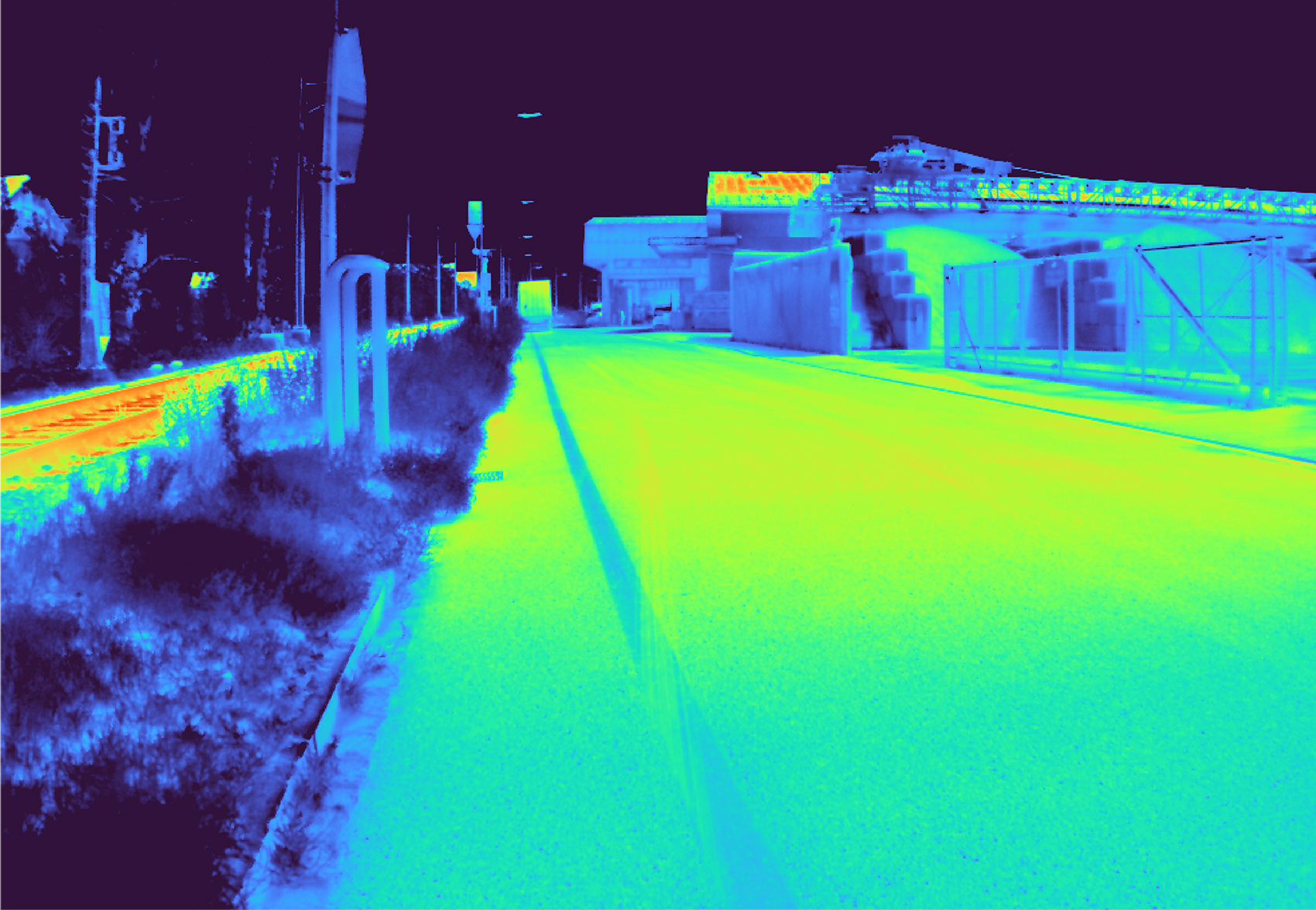Implement the right climate adaptation methods for your city
- Customised climate adaptation plans: Access tailored recommendations for measures such as rooftop and facade greening, water area construction and surface de-sealing to effectively reduce urban temperatures.
- Future-proof urban planning: Utilise heat maps and temperature projections for both current and future scenarios (e.g., 2050 and 2085), supporting long-term planning and adaptation.
- Sustainable infrastructure development: Inform city planners with scientific data to develop infrastructure that supports sustainable urban growth and resilience.
- Support for decision-making: Receive ongoing support and guidance for follow-up measures, ensuring continuous improvement and adaptation.
- Scientifically-backed adaptation measures: Rely on proven surface energy balance models (SUEWS) for accurate predictions and assessments of climate change adaptation strategies, providing a solid scientific foundation for decision-making.
Urban Heat Islands
The urban heat island effect is a typical phenomenon of the climate in a city, and is characterised by an air temperature difference between the heat-exposed city centre and the cooler surrounding rural areas. The largest air temperature difference typically occurs at night and can reach up to 10 degrees (depending on the city). Many site-specific locations inside the city centre are particularly exposed to heat. These are called hot-spots. These hotspots are typically regions with high construction density, street canyons, and sealed surfaces where heat accumulates easily.
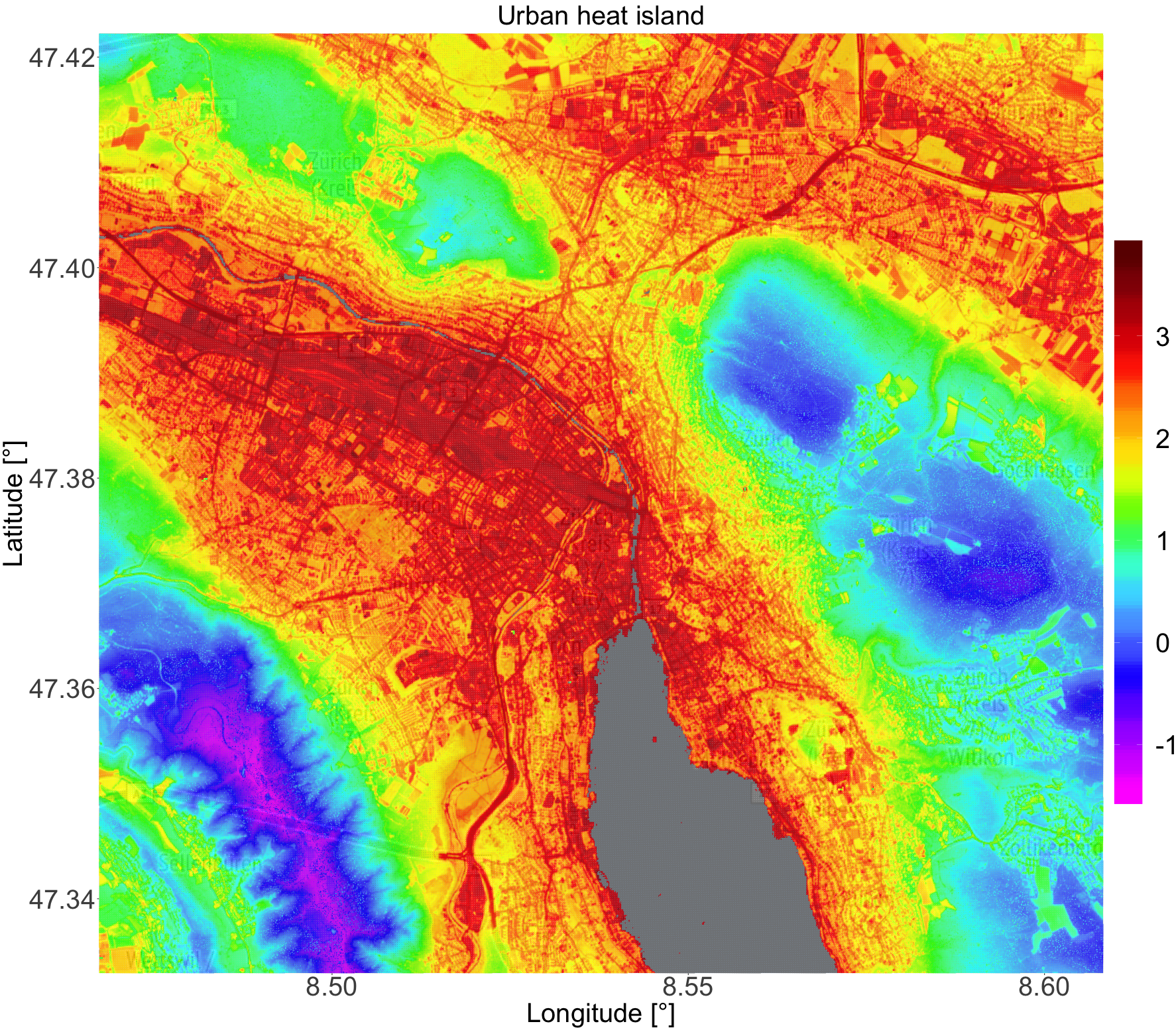
Our real-time heat maps show the current heat island effect
The urban heat island map (above) shows the urban heat island intensity for the city of Zurich (CH) in a horizontal resolution of 10 x 10 m, as an example. Areas in red indicate hotspots, whereas blue areas represent cooler areas.
With the aid of the heat maps, specific local information can be obtained on tropical nights, heat days, heating days, and cooling days. These analyses can be calculated both for the current year, and for the near and distant future using the RCP emission scenarios. The analyses thus constitute an important scientific contribution to the heat management of a city, and provide an important decision support tool for supporting cities in fighting climate change with reliable data.
Town Planning Scenarios
Due to sealed surfaces (e.g., concrete or pavement), cities contribute to their own warming. For example, surface sealing prevents the soaking of water which could later evaporate, cooling the environment in the process. Instead, the surface absorbs short-wave solar radiation, and later releases it in the form of heat. The lack of ventilation caused by compact urban development prevents the circulation of air masses, and consequently the cooling of urban areas. These are just some of the factors that influence urban climate, and lead to a general warming of the city.
It is also clear that there are various ways of changing the climate in the city through adaptation measures. Some of the most are rooftop greening and facade greening, utilisation of white asphalt, de-sealing of surfaces, or irrigation.
The de-sealing of surfaces can be a very effective adaptation measure when water-permeable areas cover a large part of the city. When the surfaces are sealed, rainwater can no longer soak in and evaporate again later, which would contribute to cooling. Instead, the sealed surfaces heat up, and contribute to the overall warming of the city. De-sealing can restore the soil's natural functions and percolation capability, making the surfaces more resilient to flooding. Unsealed surfaces can be either greened or graveled. The additional vegetation in turn contributes to the cooling of the city. The canopy of trees reduces the sunlight reaching the ground, i.e., the shade keeps the ground cool and can increase thermal comfort. In addition, vegetation can have a range of benefits for the microclimate through evapotranspiration or regulation of air movement, and better conditions for living organisms.
This service explores the impact of the climate change adaptation measures implemented with the IoT measurement network. Point-specific analysis of changing air temperature and surface temperatures is conducted, based on proven surface energy balance models (SUEWS, or the Surface Urban Energy Water-balance Scheme). Within this service, more than 20 different climate change adaptation strategies can be tested.
The reduction of both surface temperature and air temperature (compared to the current state) is calculated by SUEWS models for various climate change adaptation measures. The analysis concentrates on particularly hot areas in the city. This way, four different strategies with different options will be used (see the table below), while different sizes of adaptation measures are simulated.
| Blue strategies | Green strategies | Measures on buildings | Technical measures to change the material properties |
|---|---|---|---|
| Irrigation of green areas | Roof greening | Facade greening | Heat insulation roof materials (cool roofs) |
| Construction of fountains and water areas | Planting of new trees | Climate change adapted materials on buildings | Climate change adapted materials for asphalt (cool pavements) |
| Implementation of new green areas | White streets |
The analysis differentiates by the time of day, the season, as well as a range of atmospheric conditions (such wind conditions, cloud cover, and heat days). Coupling with climate change emission scenarios (from IPCC report) makes it possible to compare the current conditions with the expected conditions from 2050 (optionally 2085). This way, the different impacts of climate change, with and without adaption measures, can be estimated. Data is provided via a web repository (e.g., OneDrive) as csv files and png files (or similar). This service can also distinguish between one-dimensional (1D) point-specific analyses, and two-dimensional (2D) area-analyses.
Whilst 1D analyses focus on one specific and representative location, the 2D analyses cover an area for which climate change adaption measures are combined.
The results are then presented to the city representatives so that they can decide on the most desirable measures for climate adaptation, which can be afterwards implemented by the city.
If you would like to know more about our approach to town planning, please get in touch.
Technical Approach
The analysis is conducted via SUEWS, based on air temperature measurements in the surrounding of the area of interest. The analysis provides results for the surface temperature and the air temperature.
Firstly, a reference simulation of the current state of the area is carried out. In addition, multiple “sensitivity runs” are subsequently conducted, in which the surface of the area is artificially modified. Artificial surface modification changes important surface-specific material properties such as albedo, emissivity, thermal conductivity, and others.
The differences (before - after) in the variables of surface temperature and air temperature are determined by a difference calculation.
ΔT=Tsens-Tref
where Tsens is the temperature of the sensitivity run (after adaption) and Tref is the temperature of the reference simulation (before adaption).
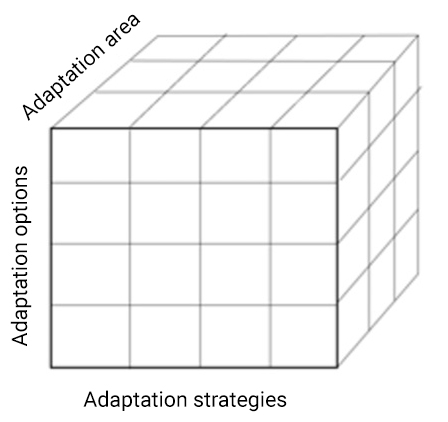
In total, 3 different groups of parameters can be changed:
- The climate change adaption strategy
- The climate change adaption option
- The extent of the adjustment measure
In order to test the effectiveness of the planned climate change adaptation measure, the area of the adaptation can be adjusted for size within the model. This allows questions to be answered, for example, how the temperature reduction changes if the considered area is doubled or halved. The temperature reduction due to the adaptation measure is simulated for the area of the adaptation measure, and then extrapolated to the entire area.
Surface temperature and air temperature are displayed for the following conditions:
- Time of day: day vs. night conditions
- Seasons: summer vs. winter conditions
- Radiation: cloudy vs. sunny conditions
- Wind: windy conditions vs. no wind
- Current conditions vs. conditions in 2050
- All results will be presented in the form of charts, maps or tables with trends, extremes and frequency distributions.
Example: Triangle Area in Basel, CH
This report tests de-sealing as an adaptation measure to climate change. For this purpose, the so-called Triangle area in the Swiss city of Basel (in the Erlenmatt quarter, near Badischer Bahnhof) was studied.
A large sealed area was de-sealed and covered with gravel and planted with 18 small trees. These will continue to grow in the coming years, creating a greener environment in the area (figure below).
Triangle area before the adaption measures (left) and after (right)
The dense IoT measurement network in Basel was used to detect small changes in the air temperature, as compared to the environment (without adaptation measures). In order to detect small differences in air temperatures in the Triangle area, three sensors were installed in the area three months prior to the start of the renovation works. In addition, reference 12 sensors in the vicinity were used for comparison (figure below). The average values of the three sensors in the Triangle area and the 12 sensors in the reference area were used for comparison.

Location of the measurement stations within the Triangle Area
Locations of the meteorological stations in the Triangle area (three stations within the black circle) and in the reference area (12 stations inside the blue circle) around.
The next figure on the bottom left shows the air temperature difference (Triangle area - reference area) before, during and after the implementation of mitigation action (on the left side). Before adaptation, the differences between the Triangle area and the surrounding area were on average - 0.3°C, meaning the surrounding area was warmer than the Triangle area. After the implementation of the adaptation measure, the differences between the triangle area and the surrounding area are 0.6°C less than 0. Therefore, the Triangle area has a 0.3°C cooling effect due to the implementation of the adaptation measure.
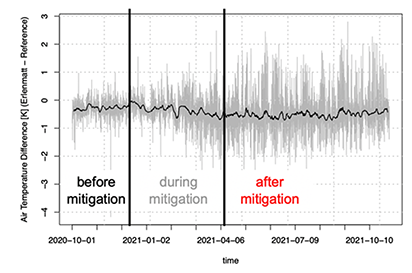
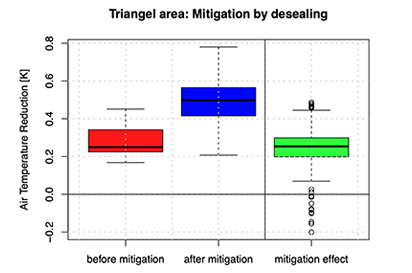
Example: Klybeck Areal in Basel, CH
Cities have a higher temperature than the surrounding rural areas. Particularly in the summer months, the temperature difference between urban and rural areas can be several degrees Celsius. This is why cities are often referred to as Urban Heat Islands (UHI).
There are various ways to counteract this effect, such as the expansion of vegetation areas or the use of light-coloured surfaces to increase the proportion of reflected sunlight. The latter leads to the earth's surface absorbing less heat and consequently heating up less.
As part of this pilot project in collaboration with the Swiss Rhine Ports, an entire road section in the harbour area of Kleinhüningen was painted white. The albedo effect was determined with the help of various measuring sensors and infrared images. The aim of the study was to find out more about the advantages and disadvantages of a white pavement using a practical test area. It was further intended to show to which degree the existing microclimate is influenced by small changes in the surface structure.
Klybeck Areal before the adaption measures (left) and after (right)
The two pictures clearly show the influence of the white pavement on the road's surface temperature. Compared to the first image, the white painted road section contributed to a reduction in surface temperature of approximately 7°C.
Validation of Adaptation Strategies
The validation of climate change adaptation strategies is part of the decision chain and enables an important feedback loop for cities to plan, prioritise and execute their adaptation measures. Continuous monitoring is required to detect new trends, and to analyse how the climate of the city is changing.
The increase in air temperature, caused by climate change, has a harsher impact on cities than on their rural surroundings. The average air temperature in cities is at least 2°C higher than in their vicinity. Therefore, any additional future temperature increase brought about by climate change will likely have severe consequences for cities.
After the city has decided which climate change adaptation measures are the most suitable and most efficient, the implementation follows. Usually, meteoblue proposes at least 4 climate adaptation measures at selected locations within the city, depending on the city's decision.
At least 6 months (preferably 12 months) before a city implements the measures, the measuring stations are installed at pre-defined locations, where the measures will take place, and in their surroundings (if there are no measurement stations available yet), according to a placement plan. These stations collect data continuously from before to after the implementation of the measures. These measurements are used in a statistical analysis to validate the climate change adaptations. Within 6 months after completion of the adaptation measure, the first validation analyses will take place which enables city planners to monitor the effect of the adaptation strategies, detect new trends and analyse how the climate of the city is changing.

If you have any questions or need advice, please get in touch. Our City Climate expert will provide you with the guidance and support you require.
Nico Bader
Meteorological Expert





